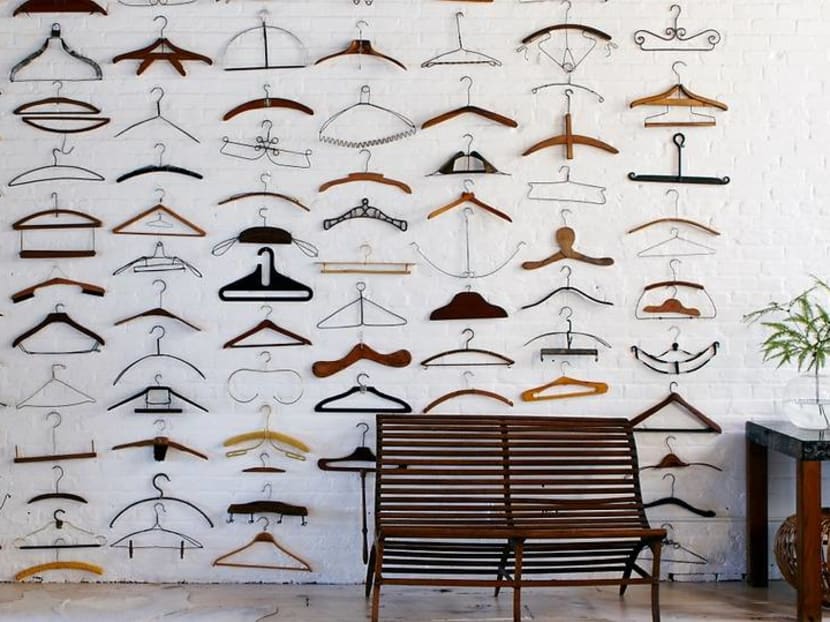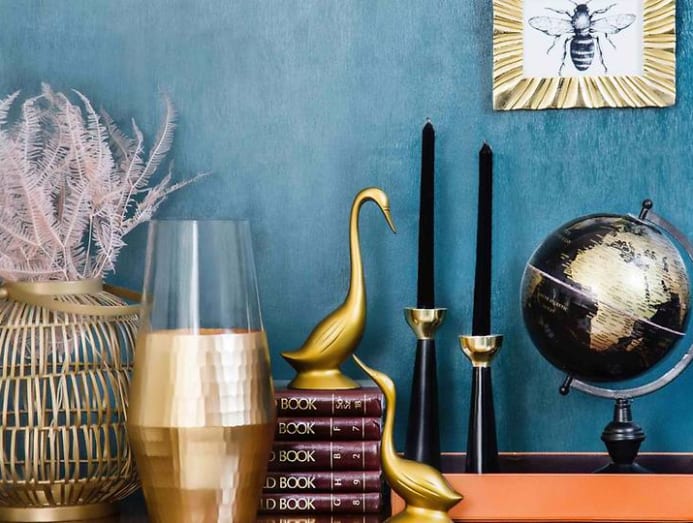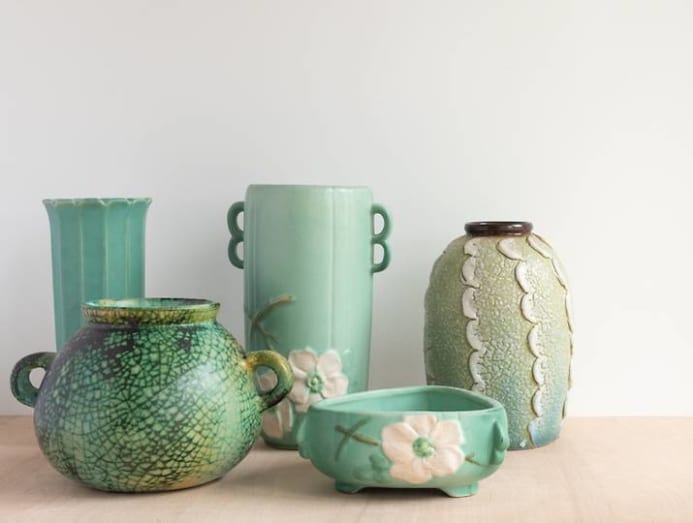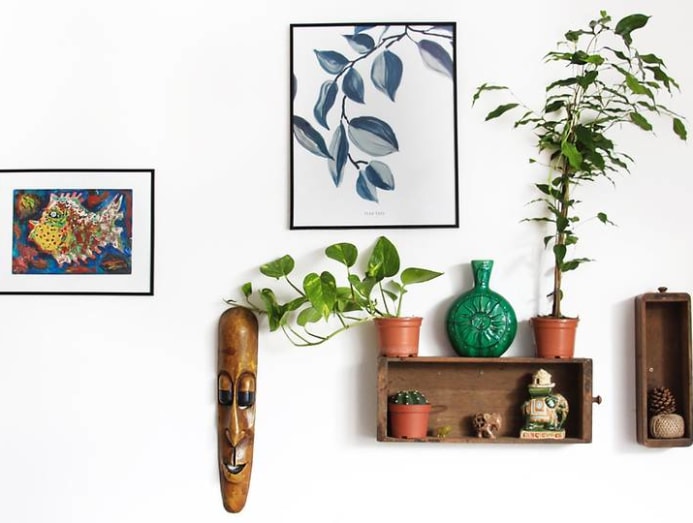How to keep your collections from looking like clutter
Ad
CNA Lifestyle
How to keep your collections from looking like clutter
At that place's an fine art to arranging collections similar a pro. Here are a few pointers.

(Photograph: Dana Gallagher/The New York Times)
Any you're drawn to – whether it's antiquarian ceramic plates, framed insect specimens or gimmicky action figures – a collection can add personality to a home. Without ane, in fact, your dwelling may not feel consummate. As Tom Stringer, a Chicago-based interior designer, put it: "They're essential".
When his business firm designs homes, Stringer said, "The whole point is to tell the stories of people's lives and experiences, and the stuff they pick upwardly along the fashion is often the launching point. I find it interesting that many clients don't even see the power in their collections".
With many of us spending more fourth dimension at dwelling these days, it may be a good moment to reconsider the stuff we have, whether it was acquired haphazardly or with the intention of building a collection.
READ: Staying at home more than oftentimes? Hither'south how to perk up your living space
How exercise you make the most of those things – and foreclose them from looking like clutter? We asked designers and collectors for advice on how to display objects for maximum decorative impact.
DEFINE YOUR COLLECTIONS
There is a fine line between a collector and a hoarder, and the deviation often lies in intention. A hoarder will amass but almost anything that seems remotely appealing, or might be needed in the future, while a collector tends to exist choosier.
"How do you ascertain what'due south a collection versus an accumulation?" said Fritz Karch, a collector, antiques dealer and stylist; the former collecting editor at Martha Stewart Living magazine; and an author of Collected: Living With the Things You Love. "It has to practice with a kind of discernment and the energy you put in every bit an editor."

Starting time, define the types of objects you want to display. Then, choose each example with purpose. If y'all're going to display pottery, don't simply put out every bowl yous can get your hands on. Attempt to be mindful of displaying a range of interesting examples, perhaps in a diverseness of sizes, textures or colours.
And don't make the mistake of assuming that collections take to be valuable to be interesting, said Karch, who has collected items like intricately carved stone-fruit pits and vintage handmade potholders. Follow your personal passions.
"I've built whole collections where every unmarried thing was a dollar," he said.
GROUP LIKE OBJECTS
One of the easiest and about powerful ways to display various collections is to keep each i separate. If y'all collect Scandinavian tableware, ceramic dogs and vintage postcards, for instance, mixing them together or handful a few pieces from each collection throughout the house tin can upshot in an interior that looks messy.
Yous're better off keeping each group of items contained and installed in unlike rooms.
"There'south ability in numbers," said Rebecca Robertson, an interior designer in New York who worked on the Collected book with Karch, and who has busy walls with unexpected objects similar old subcontract implements and antique pie tins. "When you become 25 things together, it really starts to hold the wall and draw attention."

Jesse Carrier and Mara Miller, the principals of Carrier and Company, used this technique when designing a house for a couple of avid collectors in Southampton, New York. The designers installed a collection of walking sticks in a drinking glass case and a large ceramic crock in the entrance hall, blueish-and-white County porcelain in the living room, boat dioramas and models in the dining room, and framed maps in the study.
"It'due south more impactful when you encounter them amassed, versus scattered effectually," Carrier said. "Information technology'due south simply a unproblematic way of organising them visually."
OR HIGHLIGHT SIMILARITIES
It's not verboten to mix objects from various collections, simply doing so requires a flake of forethought.
For a mixed display, Karch recommended group objects based on a common element – maybe a similar mix of colours, shapes or materials. "At that place has to be 1 defining affair that ties it all together," he said.
READ: Staying in on the weekend? Effort some budget-friendly dwelling house improvement projects
At his country house in Salisbury, Connecticut, Matthew Patrick Smyth, a New York-based designer, grouped some of his favourite things on tables, combining objects with like finishes. In the home'southward master bedchamber, a table holds a black-painted model for a stage set; a dark, pitted bronze sculpture past Bruno Romeda; and stone, terra-cotta and bronze African artifacts.
"The colours and textures work together because there'south a matte quality to them all," said Smyth, whose firm will be featured in his upcoming book, Through A Designer's Heart, next calendar month.
For a salon-manner gallery wall, yous can necktie wildly different pieces together by using the same color picture show frame around every item.
CREATE A LARGER FRAME
Once yous've selected the objects that volition be displayed together, create a visual frame to make them experience even more like a cohesive unit.
One way to frame a group of objects is to brandish them in a single bookcase, etagere or cabinet with glass doors. If the objects will exist displayed on a coffee or side tabular array, placing them on a tray can help pull them together visually.

Another collector'southward play a joke on, Robertson said, is to put items under a drinking glass cloche or within a glass box: "The minute you put a dome on something, or put information technology in a drinking glass box, it feels much more special".
READ: How to make your home experience more than spacious: Comprise your kid's clutter
For a wall-mounted collection of butterfly and bug specimens in a house in Chicago, Stringer created an installation within a rectangle created by architectural moulding. "If you describe a line effectually things, yous brand them seem more important," he said.
PLAY WITH THE COMPOSITION
If your brandish doesn't immediately expect as appealing as yous had hoped, play with the limerick by moving pieces effectually. Lisa Congdon, an artist and collector in Portland, Oregon, sometimes assembles vintage part supplies like interlocking pieces of a colourful puzzle. At domicile, she stacks her vintage Scandinavian enamelware in creative ways, using some pieces upside downward or as pedestals for other pieces.
"In the collector world, we talk about clustering things," Congdon said. "You tin can do that by stacking, or by placing taller things in front of shorter things. Recollect of it as composing a painting or making a quilt. Y'all want the middle to travel effectually."
For a wall installation, Congdon suggested playing with the arrangement on the floor first.
"Lay down a big piece of newsprint and make your arrangement," she said. Once you're happy, trace the outlines of the pieces onto the paper, record information technology to the wall and install nails or other fasteners using the outlines as a map. Finally, tear the paper away and hang your collection.

Another rule of thumb for designers is that smaller collections often look best when displayed in odd numbers – "groups of iii, 5 or vii", Smyth said. So if you accept four or 6 sculptural vases that expect bad-mannered together, endeavor removing one to see if the overall composition improves.
PLAN FOR THE FUTURE
Few collections are static, as many of united states of america continue to stumble upon irresistible objects even when we're not actively looking, so consider how displays tin evolve over fourth dimension.
It's normally easy to add to salon-style gallery walls, because well-nigh arrangements take a somewhat random appearance, and no single piece will throw off the overall balance. Grid-like and symmetrical installations aren't then forgiving.
For objects displayed on shelves, it'south often a expert idea to leave a trivial extra space between the beginning few objects you larn, to suit future acquisitions. Some other option is to follow Stringer's lead: When he was presented with one client's extensive collection of blue-and-white ceramic plates, he filled upwardly a hutch first and so began mounting plates to the wall around the hutch.
"That's what happens when a customer's collection of blue-and-white transferware gets out of control," he said. "It's a sign that they either need to keep going until the entire wall is filled, or that maybe they need to start collecting something else."
Past Tim McKeough © The New York Times
Recent Searches
Trending Topics
rutherfordcaut1962.blogspot.com
Source: https://cnalifestyle.channelnewsasia.com/cna-lifestyle/how-keep-your-collections-looking-clutter-236711

0 Response to "How to keep your collections from looking like clutter"
Post a Comment